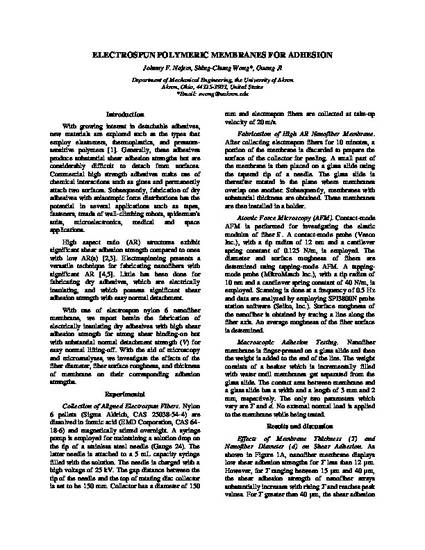
With growing interest in detachable adhesives, new materials are explored such as the types that employ elastomers, thermoplastics, and pressuresensitive polymers [1]. Generally, these adhesives produce substantial shear adhesion strengths but are considerably difficult to detach from surfaces. Commercial high strength adhesives make use of chemical interactions such as glues and permanently attach two surfaces. Subsequently, fabrication of dry adhesives with anisotropic force distributions has the potential in several applications such as tapes, fasteners, treads of wall-climbing robots, spiderman's suits, microelectronics, medical and space applications. High aspect ratio (AR) structures exhibit significant shear adhesion strength compared to ones with low AR(s) [2,3]. Electrospinning presents a versatile technique for fabricating nanofibers with significant AR [4,5]. Little has been done for fabricating dry adhesives, which are electrically insulating, and which possess significant shear adhesion strength with easy normal detachment. With use of electrospun nylon 6 nanofiber membrane, we report herein the fabrication of electrically insulating dry adhesives with high shear adhesion strength for strong shear binding-on but with substantial normal detachment strength (V) for easy normal lifting-off. With the aid of microscopy and microanalyses, we investigate the effects of the fiber diameter, fiber surface roughness, and thickness of membrane on their corresponding adhesion strengths.
Available at: http://works.bepress.com/shing-chung_wong/83/
